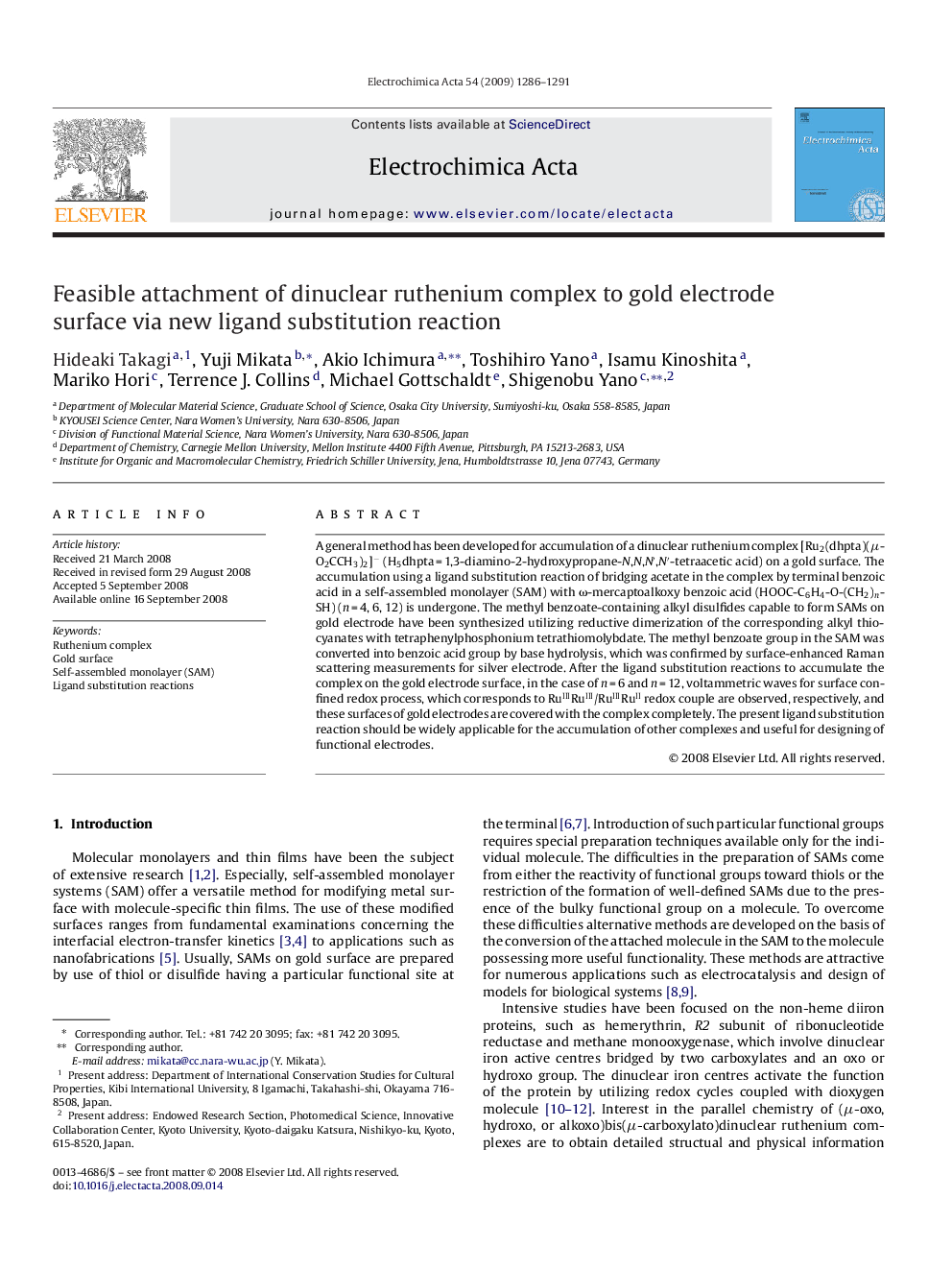| Article ID | Journal | Published Year | Pages | File Type |
|---|---|---|---|---|
| 193642 | Electrochimica Acta | 2009 | 6 Pages |
A general method has been developed for accumulation of a dinuclear ruthenium complex [Ru2(dhpta)(μ-O2CCH3)2]− (H5dhpta = 1,3-diamino-2-hydroxypropane-N,N,N′,N′-tetraacetic acid) on a gold surface. The accumulation using a ligand substitution reaction of bridging acetate in the complex by terminal benzoic acid in a self-assembled monolayer (SAM) with ω-mercaptoalkoxy benzoic acid (HOOC-C6H4-O-(CH2)n-SH) (n = 4, 6, 12) is undergone. The methyl benzoate-containing alkyl disulfides capable to form SAMs on gold electrode have been synthesized utilizing reductive dimerization of the corresponding alkyl thiocyanates with tetraphenylphosphonium tetrathiomolybdate. The methyl benzoate group in the SAM was converted into benzoic acid group by base hydrolysis, which was confirmed by surface-enhanced Raman scattering measurements for silver electrode. After the ligand substitution reactions to accumulate the complex on the gold electrode surface, in the case of n = 6 and n = 12, voltammetric waves for surface confined redox process, which corresponds to RuIIIRuIII/RuIIIRuII redox couple are observed, respectively, and these surfaces of gold electrodes are covered with the complex completely. The present ligand substitution reaction should be widely applicable for the accumulation of other complexes and useful for designing of functional electrodes.
